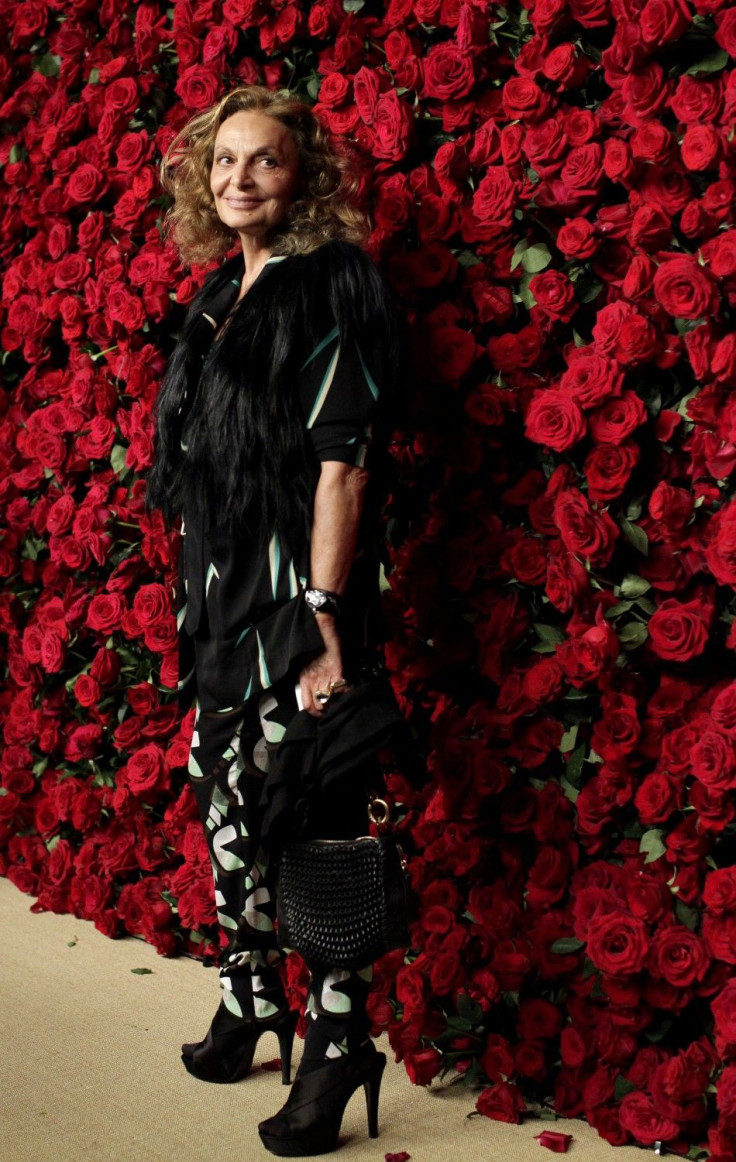New York Fashion Week 2012: New CFDA Guidelines Cull Underage, Underweight Models

The runways may look decidedly different at New York Fashion Week 2012. Diane Von Furstenberg, president of the Council of Fashion Designers of America, has used her might fashion reign for right. The designer issued guidelines for New York Fashion Week 2012 specified to cull underage, underweight models.
The new CFDA guidelines include details on how models can stay healthy during New York Fashion Week 2012. Models will be asked for official ID to ensure that no one under the age of 16 walks the runways.
Von Furstenberg has pioneered the CFDA's Health Initiative for the past five years. These most recent guidelines take yet another giant stride in a conscientious direction.
Designers generally produce only one sample size for the runway, and in the last decade there has been a dramatic downward shift in the sample size of some of the top design houses, Von Furstenberg wrote in her CFDA guidelines.
As a result, models are under increasing pressure to be thinner and thinner, and younger and younger. The industry's hiring of prepubescent-appearing teenage girls as models of adult clothing sets an unrealistic standard; hips and breasts, the curves that define the female figure, are absent. Some models have difficulty maintaining the body ideal as they move into adulthood and run the risk of engaging in unhealthy eating behaviors that lead to eating disorders.
In January 2007, the CFDA formed a health initiative to address what has become a global fashion issue: the overwhelming concern about whether some models are unhealthily thin, and whether or not to impose restrictions in such cases. Designers share a responsibility to protect women, and very young girls in particular, within the business, sending the message that beauty is health.
While some models are naturally tall and thin and their appearance is a result of many factors... other models have or develop eating disorders. Although we cannot fully assume responsibility for an issue that is as complex as eating disorders and that occurs in many walks of life, the fashion industry can begin a campaign of awareness and create an atmosphere that supports the wellbeing of these young women.
The CFDA's campaign to promote the concept of a healthy mind in a healthy body is off to a great start and - with growing support from the fashion community - holds the promise of a healthier standard of beauty, she concluded.
Some of the guidelines spelled out in the memo include:
- Educate the industry to identify the early warning signs in an individual at risk of developing an eating disorder.
- Encourage models who may have an eating disorder to seek professional help in order to continue modeling. And models who are receiving professional help for an eating disorder should not continue modeling without that professional's approval.
- Develop workshops for the industry (including models and their families) on the nature of eating disorders, how they arise, how we identify and treat them, and complications if they are untreated.
Along with these three, Von Furstenberg promotes educating models on the dangers of drugs and tobacco; she also explains the new ID-checks.
These New York Fashion Week 2012 guidelines come shortly after a highly-circulated article written by PLUS Model Magazine, detailing the dangerous standards in the modeling industry.
- Twenty years ago the average fashion model weighed 8% less than the average woman. Today, she weighs 23% less.
- Ten years ago plus-size models averaged between size 12 and 18. Today the need for size diversity within the plus-size modeling industry continues to be questioned. The majority of plus-size models on agency boards are between a size 6 and 14, while the customers continue to express their dissatisfaction.
- Most runway models meet the Body Mass Index physical criteria for Anorexia.
- 50% of women wear a size 14 or larger, but most standard clothing outlets cater to sizes 14 or smaller.
Also, check out exclusive coverage direct from the runways at New York Mercedes-Benz Fashion Week from the International Business Times on IBTimes Fashion & Life Facebook and IBTimes Fashion & Life Twitter pages beginning Feb. 9.
© Copyright IBTimes 2025. All rights reserved.





















